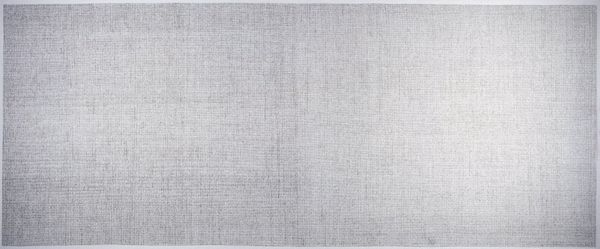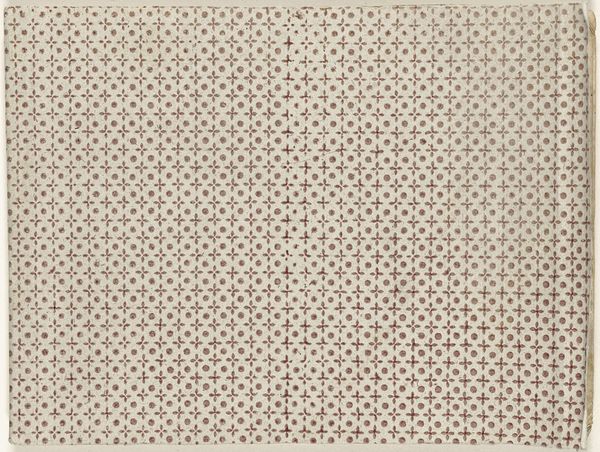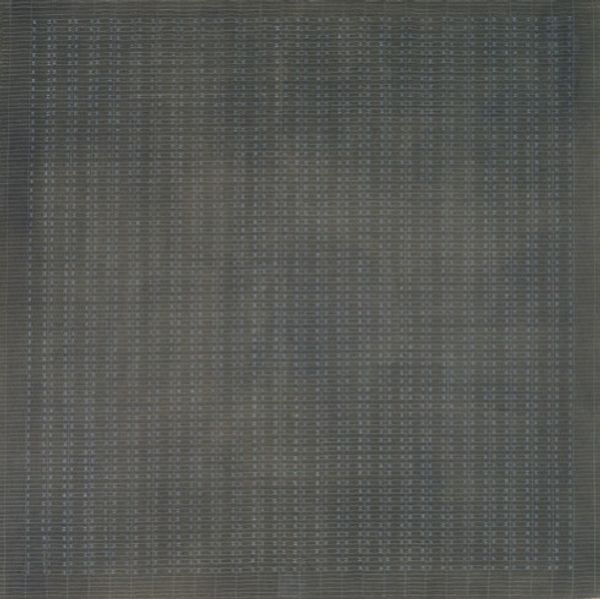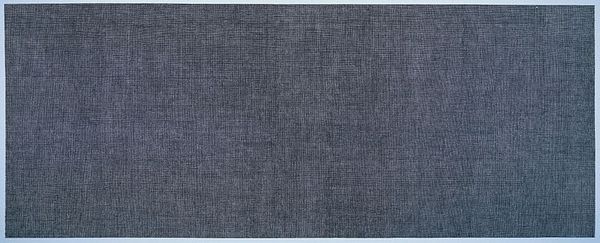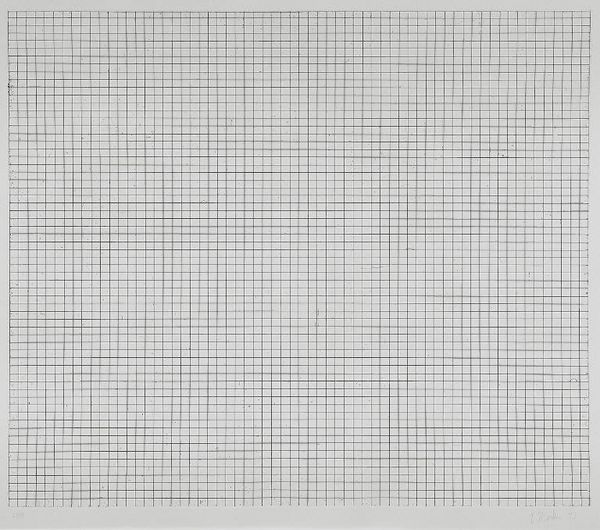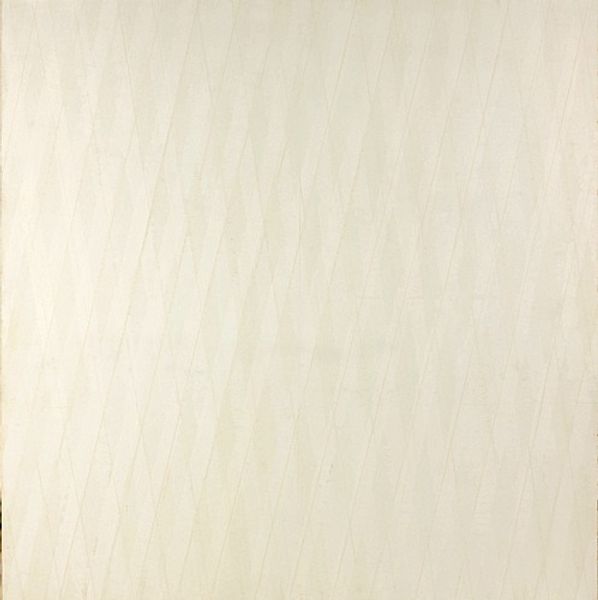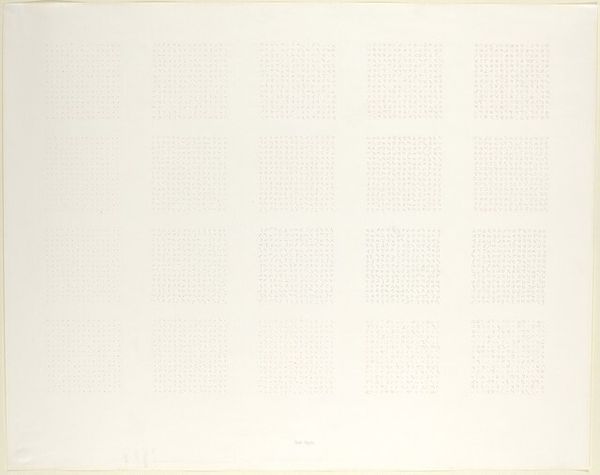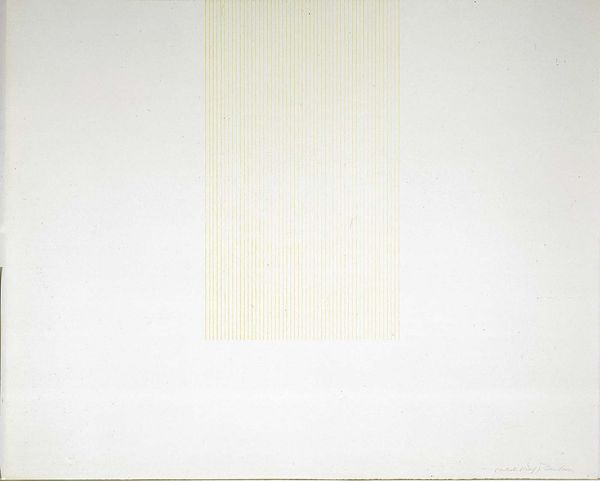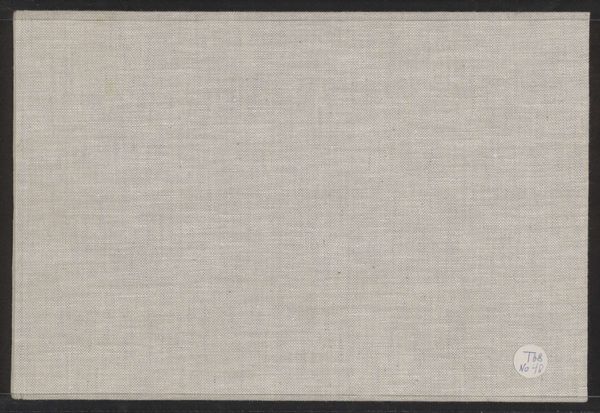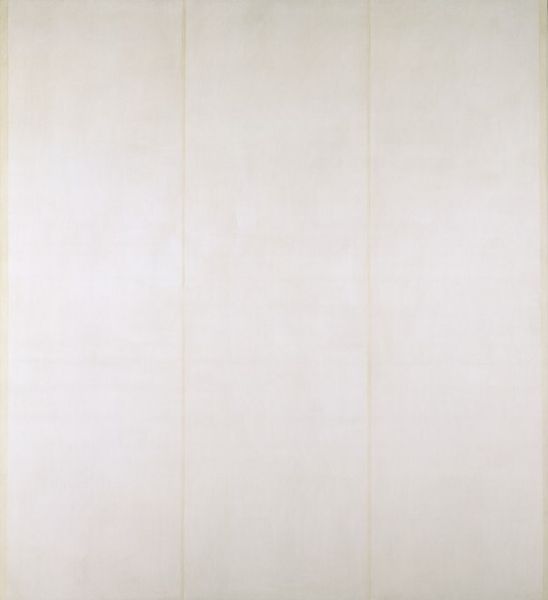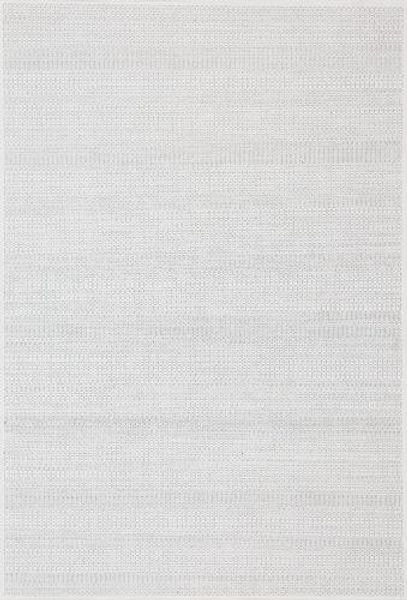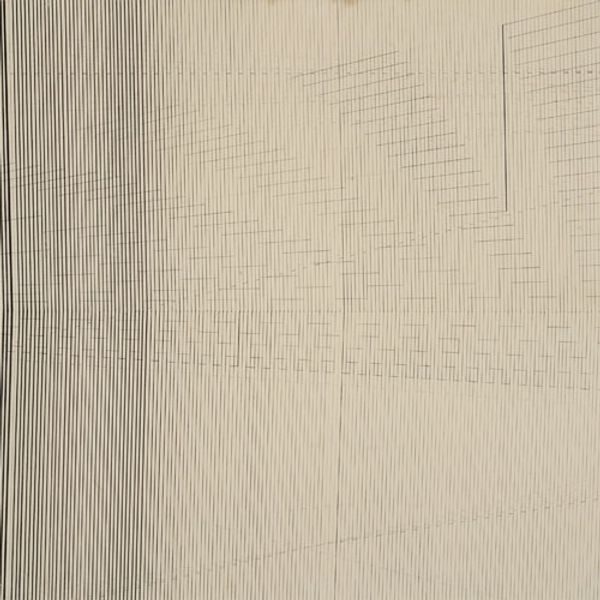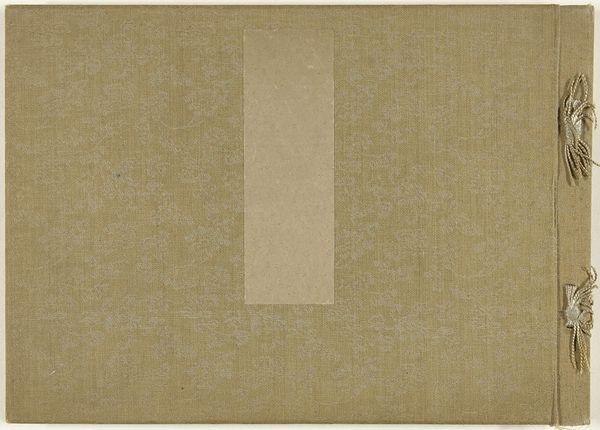
paper
#
contemporary
#
pattern
#
paper
#
organic pattern
#
geometric
#
abstraction
#
organic texture
Copyright: Li Huasheng,Fair Use
Curator: My initial reaction is that this piece, Li Huasheng's "Untitled," is incredibly serene. The almost imperceptible grid pattern on paper invites contemplation, wouldn't you agree? Editor: Contemplative indeed. When I look at this "Untitled" work, I’m immediately drawn to the subtle variations within what appears to be a minimalist grid. What materials did Huasheng employ and how does his process speak to a larger conversation about labor and value? Curator: Huasheng used ink on paper, applying meticulous, repetitive strokes. The subtle inconsistencies in the grid point to the labor-intensive nature of the process, challenging our perception of time and skill, and how these translate into artistic meaning. Thinking of it as challenging the traditional hierarchy where "high art" overshadows "craft." What I am really wondering, considering he did that artwork using his hand as his main tool, is why did he make it on paper? Editor: The use of paper, I imagine, speaks to accessibility and dissemination, suggesting perhaps a rejection of more monumental forms of artistic expression typical of that period. By selecting such a ubiquitous material, he democratizes art making and its viewing. The horizontal format implies a sort of cinematic scope and begs the question, where were these displayed, how were they received by the broader art ecosystem? Curator: That's fascinating. I agree the material makes art feel closer. It creates a unique encounter. What about this evokes emotion for you? I mean besides your academic self. Editor: The emotion, I suppose, emerges from that tension: the rigid geometric design against the artist's evident hand and physical involvement and I would say even physical struggle while performing this highly repetitive task. It's about labor, endurance and ultimately, accessibility as I've pointed out previously. That's pretty striking to consider! Curator: Considering his cultural background this process might represent the cultivation of discipline, meditation almost. You notice this work really exists in a very muted tone, evoking silence and careful consideration. Editor: And those things carry a lot of meaning depending on who has access to observe and understand these practices! Thank you for pointing that out; I hadn't approached it quite from that direction! Curator: My pleasure! Seeing and dissecting the piece with you brought even more meaning to light. I'm looking forward to the next one!
Comments
No comments
Be the first to comment and join the conversation on the ultimate creative platform.
